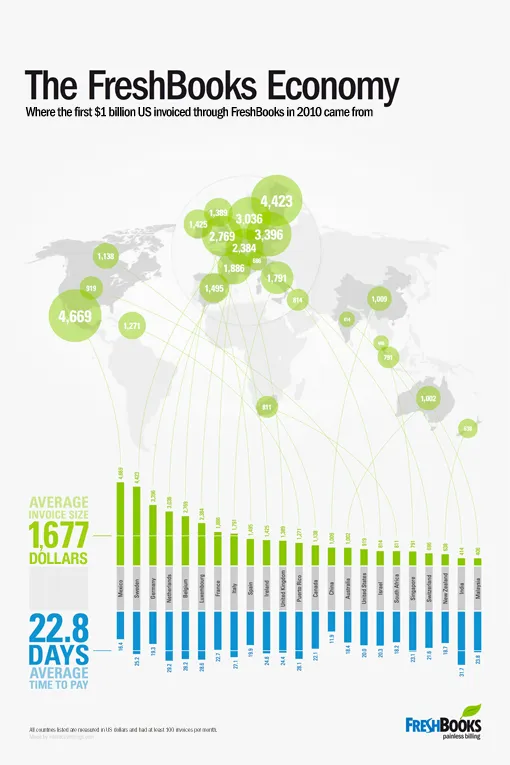When companies host their software in the cloud, users benefit not just from the service alone, but from the data a web-based software provider can gather on all of its customers. For example, users of Mint didn’t just get nifty web-based personal finance software, they also received access to a variety of statistics pulled from across the Mint user base that were just as useful as the original software.
This lesson was driven home in mid July when FreshBooks detailed the size of its “FreshBooks economy.” While it was interesting as an indicator for just how much traction Freshbooks has achieved in the marketplace (for reference, it took the company five months this year to reach $ 1 billion in invoices generated– a feat that took until eight months last year) it’s also a reminder of the value that connected applications can bring.

Just like the FreshBooks report card — a personalized report that FreshBooks users receive comparing their invoicing to their industry average — the FreshBooks Economy infographic is the result of aggregated and anonymized hard data — the sort of data that you can easily acquire in a connected model.
Running multiple small businesses from manufacturing to consulting, I’m well-acquainted with the joys of filling out statistical reports. First are the accuracy issues — on a monthly basis, I’m required to file reports for central Governmental (in my case New Zealand, although this applies equally in other jurisdictions) statistics agencies on a multitude of topics, including number of employees, total goods sold, goods imported and exported, etc. These reports, which are generally pretty rough and ready, are then aggregated to create statistical measures that affect economies all across the globe. The reality is that I, like many other businesses, tend to favor speed over accuracy when filling in these forms, making their measurements rough. On an aggregate level, that affects the validity of the statistics themselves.
Secondly, all this filling and filing of forms takes a significant amount of time for a small business. The ability to tap into real data aggregated without subsequent user input beyond source data is compelling. Because it saves time for small businesses already stressed with regulatory compliance, the ability to tap into user data without additional action by the business streamlines the process of gathering data. Examples like the FreshBooks Economy infographic give a taste of how efficient and accurate data in a connected economy can be.
Ben Kepes is an independent consultant and contributing writer for GigaOM. Please see his disclosure statement in his bio.

